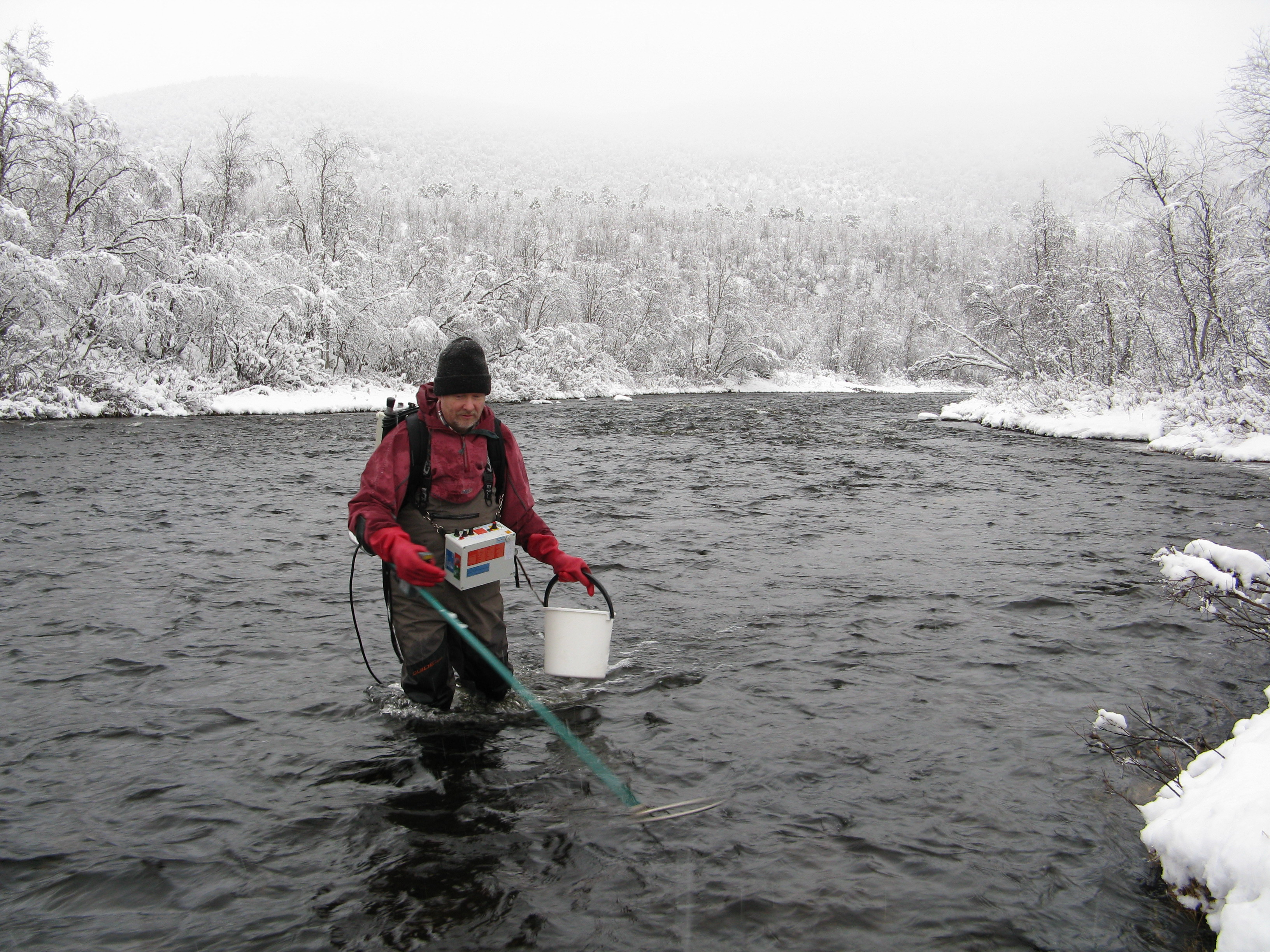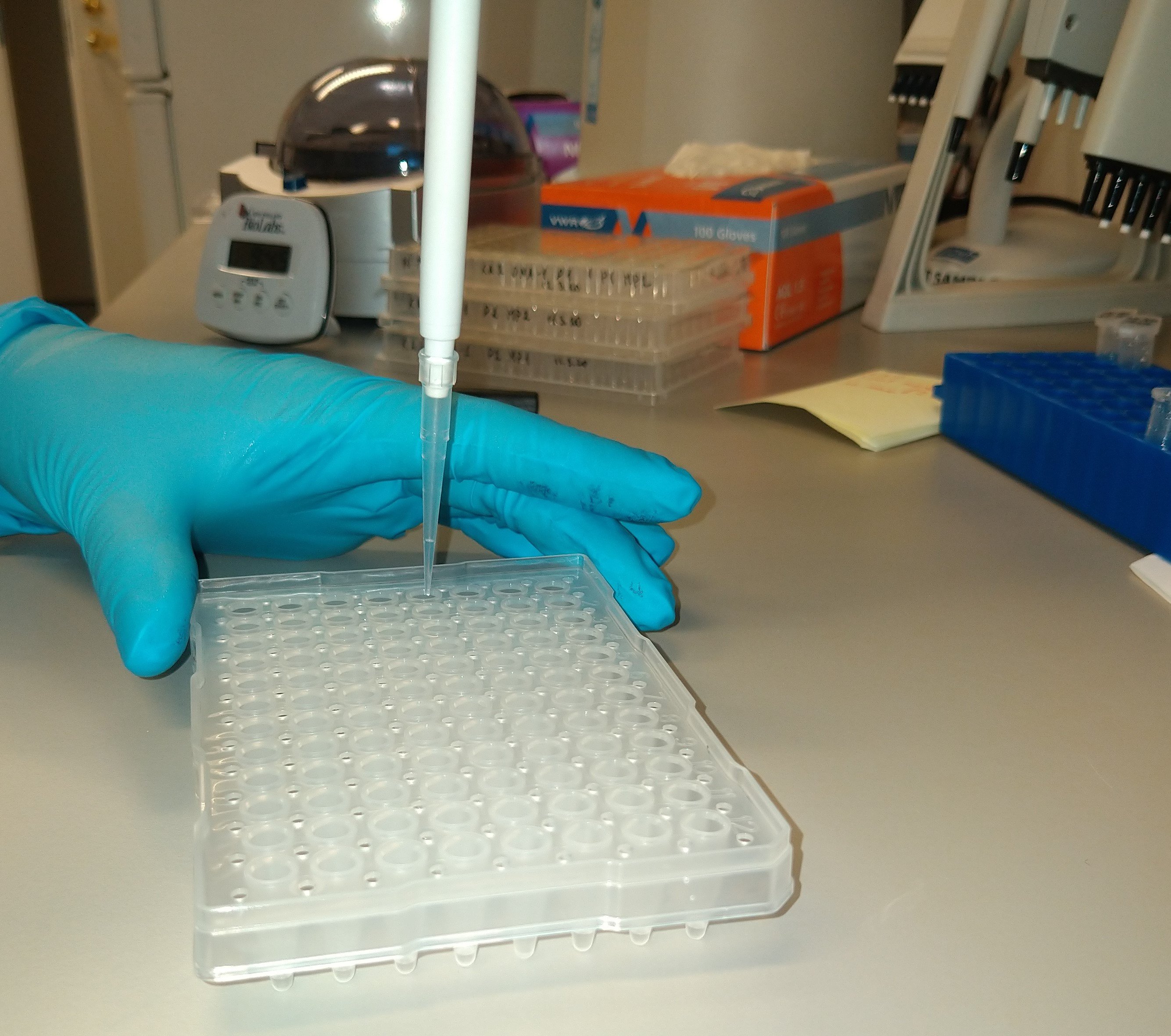Atlantisk laks i Barentsregionen | Atlantic salmon in the Barents region

Norske, russiske, finske og svenske parter startet i 2020 et samarbeid i Kolarctic prosjektet "CoASal" om å bevare villaksen som ressurs for folk i nord. Prosjektet skal dokumentere og studere effekten av nye reguleringer i sjølaksefisket og undersøke utviklingstrekk som truer den atlantiske laksen i dag; klimaendringer, voksende oppdrettsindustri og nye sykdommer. Prosjektet avsluttes i september 2022 av de nordiske partnerne.
Norwegian, Russian, Finnish and Swedish partners started in 2020 to cooperate in the Kolarctic project "CoASal" Conserving our Atlantic salmon as a sustainable resource for people in the North. The project aims to document and examine the new sea salmon fishery regulations, study the effects of growing threats Atlantic salmon populations face today with climate change, growing cage culture industry and emerging diseases. The Nordic partners will finalise the project in the end of September 2022.
Hvilke spørsmål stiller vi oss?
- Hvordan påvirker nye fiskereguleringer laksebestandene i Barentsregionen? Har sammensetning i sjølaksefangstene endret seg? Har reguleringen hatt ønsket effekt?
- Hvordan påvirker klimaendringene, mer oppdrett og nye sykdommer de ville bestandene av atlantisk laks i Barentshavsområdet?
- Hva er de mest effektive tiltakene for å motvirke negativ påvirkning på villaksen?
For å få svar på dette, må vi undersøke og dokumentere hvordan laksen har det i sitt miljø (laksens økologi), hvor den enkelte laks kommer fra og hvilke laksebestander som dominerer fangstene i ulike områder.
Gjennom prosjektet vil vi øke kunnskapen om villaksen og styrke samarbeidet mellom lokale fiskere, forvaltere og forskere i Norge, Russland, Finland og Sverige. Vi legger opp til god informasjon til deltakere og publikum gjennom seminarer, en egen nettside og en flerspråklig vandreutstilling.
Villaksen i Barentsregionen er hovedpersonen
Villaksen er en tilpasningsdyktig vandrer som får oss til å undre. Den klekkes og vokser opp i bekker og elver i Barentsregionen. Fra å leve et liv i ferskvann, tilpasser den seg livet i havet – med alle de fysiologiske endringene det innebærer. Villaksen vandrer tusenvis av kilometer fra elven den vokste opp i, til havet og tilbake. Den finner hjem til sin egen elv og gjerne sideelven der den ble klekket, for å gyte og gi liv til en ny generasjon villaks.
Det er den ville laksen, Atlanterhavslaksen, som er hovedpersonen i CoASal-prosjektet.
Til tross for forvaltning med tiltak for å bevare villaksen og internasjonale og bilaterale avtaler for å beskytte laksebestander og deres leveområder, er dagens situasjon for villaksen fortsatt urovekkende.
Dette skyldes globale klimaendringer, mer oppdrett, fremmede fiskearter og at fiskens leveområder blir ødelagte. Vi vet også at overføring av smitte fra oppdrettslaks til villaks og sykdommer relatert til temperaturøkning i havet, er en trussel som vi foreløpig vet lite om.
Samarbeid med felles mål
Villaksen er en felles naturressurs og et symbol på levedyktige og sunne økosystemer. Villaksen har stor betydning for lokalsamfunn og tradisjoner. Naturen følger ikke menneskeskapte grenser. Derfor er vitenskapelig samarbeid over landegrensene nødvendig for å skaffe relevant kunnskap og finne frem til de beste løsningene.
Målet for landene som er med i dette prosjektet er å ta vare på villaksen, sørge for at framtidige generasjoner kan ha glede av sunn villaks og sørge for at regionen får beholde denne fantastiske råvaren – for matauke, rekreasjon og turisme.
Aims of the project
- To document and investigate possible changes in the coastal salmon fishery due to new regulations.
- To examine major threat factors to wild salmon stocks in the Barents region: effects of climate change, growing cage culture industry and emerging diseases (PKD and viruses).
- What are the most effective ways to mitigate these threats?
To get knowledge about this we will study and document salmon biology and ecology, origin and the catches composition in the mixed-stock fisheries.
Through the project we will raise awareness and knowledge, and enhance communication between local fishermen, fishery managers and scientists in Norway, Russia, Finland and Sweden. We will share information through seminars and meetings, web site and a multilingual temporary exhibition.
The amazing wild Atlantic salmon
The Atlantic salmon is a fascinating creature, which captures the human imagination. Its birth and growth in streams and rivers of the Barents region; its transformation from freshwater to a seawater habitat with all physiological changes that are involved; its migration across thousands of kilometres from the feeding grounds to the coastal areas and its accurate return to the river and even the riffle where it was born, so as to breed and re-start its life cycle – all these qualities fill us with admiration.
Despite implementation of stronger conservation and management measures, international and bilateral agreements to protect both salmon stocks and their habitats, the current situation for wild salmon stocks is alarming. Most likely because of multiple factors, including global climate change, intensive development of salmon cage culture industry, introduction of foreign fish species and habitat destruction. Another major threat, where present knowledge is limited, is the transmission of various pathogens from farmed to wild salmon and outbreaks of diseases due to global increase of temperatures.
Why is cross-border cooperation needed?
Atlantic salmon is a common nature resource and an icon of viable and healthy ecosystems. It is of great importance for local communities and traditions. As nature does not follow man-made borders, cross-border scientific collaboration is necessary to obtain relevant knowledge and find the best solutions.
The aim for all countries involved is to take care of and contribute towards maintaining healthy wild salmon stocks for the future generations, and for the viable and attractiveness of the Arctic region.
Nye resultater fra forskning presenteres på folkemøter
Statsforvalteren i Troms og Finnmark inviterer til folkemøter i Tana og Pasvik for å dele resultater fra Kolarktic-prosjektet CoASal.
Dokumenter
- REPORT I annual and long-term changes in subarctic salmon environment.pdf
- REPORT II Long-term temperatures in the coastal areas.pdf
- REPORT III Summary from the long-term mean monthly river temperatures.pdf
- REPORT IV The development of water temperatures.pdf
- REPORT V Simultaneous variations in temperatures.pdf
- REPORT VI Salmon catches at sea within four salmon districts.pdf
- REPORT VII Long-term annual catches in municipalities; size distribution and fishing methods.pdf
- REPORT VIII Mean annual and seasonal weights of salmon in four salmon districts.pdf
- REPORT IX Medium date of capture and cumulative catches in salmon districts.pdf
- REPORT XI Weekly salmon catch distributions at sea in finnmark municipalities.pdf
- REPORT X Weekly catches in bagnet and bendnet fishery in four salmon districts.pdf
- REPORT XII Median dates and cumulative catches in Finnmark municipalities.pdf
- REPORT XIII Daily catches in numbers and kilos in municipalities.pdf
- REPORT XIV Daily bagnet and bendnet catches in Tanafjord and in Berleväg municipality area.pdf
- REPORT XV CoASal salmon ecology.pdf
- REPORT XVI Salmon catches in Finnmark rivers.pdf
- REPORT XVII Salmon resources fishers, sites, catches.pdf
- Report XVIII Released and killed salmon in the catches.pdf
- Report XIX Strong annual variations combined with the long-term declining catches in multi seawinter S.pdf
- Report XX_KO4178_CoASal_Genetics_report_Ozerov_et_al_2023.pdf
- Report XXI_KO4178_CoASal_Temporal_variation_Finnmark_stocks_SNPs_Ozerov_et_al_2023.pdf
- Report XXII_KO4178_CoASal_aquaculture report.pdf
- Report XXIII_CoASal_virus_Madhun.pdf
- Report XXIV Salmon fishery at sea in Finnmark
Kontaktpersoner | Contacts
Statsforvalteren i Troms og Finnmark
County Governor of Troms and Finnmark
hovedpartner Lead Partner
Malin Solheim Høstmark
malin.hostmark@statsforvalteren.no
+47 78 95 03 66
Havforskningsinstituttet
Institute of Marine Research
Vidar Wennevik
vidar.wennevik@hi.no
University of Turku, Biodiversity Unit (UTU)
Turun yliopisto, biodiversiteettiyksikkö
Kari Saikkonen
karisaik@utu.fi
Swedish University of Agricultural Sciences (SLU)
Sveriges lantbruksuniversitet
Anti Väsemägi
anti.vasemagi@slu.se
Lenker | Links
Logo


Project activities

